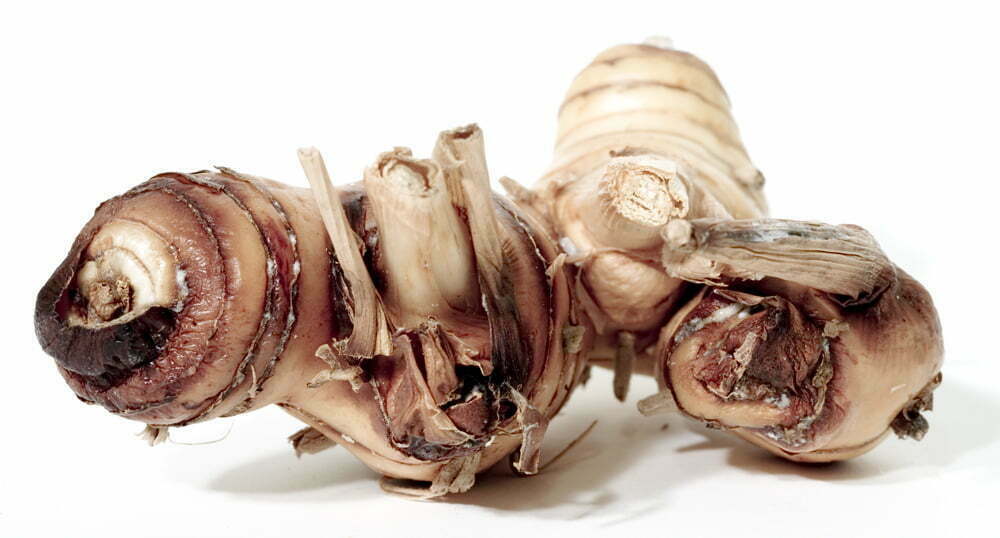Galangal, a lesser-known cousin of ginger, is a bold and aromatic rhizome treasured in Southeast Asian cuisine and traditional medicine. With its unique citrusy, peppery flavour and a subtle pine-like aroma, galangal is a culinary gem and a healthful ingredient with numerous benefits.
Origins and Characteristics
Native to Southeast Asia, galangal belongs to the Zingiberaceae family, which also includes ginger and turmeric. There are two primary types of galangal:
- Greater Galangal (Alpinia galanga): Common in Thai and Indonesian dishes, it has a sharp, earthy flavour.
- Lesser Galangal (Alpinia officinarum): Popular in traditional Chinese medicine, it has a milder, sweeter taste.
Unlike ginger, galangal has a tougher texture and reddish-brown skin with pale, ivory flesh. Its robust, aromatic profile makes it a staple in many Asian cuisines.
Culinary Uses
Galangal’s bold flavour shines in a variety of dishes:
- Thai Cuisine: It’s a key ingredient in soups like Tom Yum and curries like Massaman.
- Indonesian and Malaysian Dishes: Often used in rendang and sambal for its warming spice.
- Balinese Spice Pastes: Ground galangal adds complexity to spice blends.
- Beverages: Sliced galangal is brewed into teas or infused into cocktails for a zesty kick.
Galangal is best used fresh but is also available dried or powdered. If using dried galangal, rehydrate it before use to release its flavour.
Health Benefits
Galangal isn’t just about taste; it’s a powerhouse of nutrients and medicinal properties:
- Anti-inflammatory Properties: Rich in antioxidants like flavonoids, galangal helps reduce inflammation and combat oxidative stress.
- Digestive Aid: Known to soothe indigestion, it stimulates digestive enzymes and alleviates nausea.
- Immune Support: Galangal’s antimicrobial and antiviral properties help fight infections and boost immunity.
- Respiratory Health: It’s traditionally used to relieve congestion, coughs, and sore throats.
- Potential Cancer-fighting Properties: Preliminary studies suggest galangal’s bioactive compounds may help inhibit the growth of cancer cells.
Incorporating Galangal into Your Diet
If you’re new to galangal, here are a few ways to enjoy it:
- Add thin slices to broths and soups for a fragrant base.
- Blend it into curry pastes with lemongrass, garlic, and chili.
- Use it in marinades for seafood, chicken, or tofu.
- Brew galangal tea with honey and lime for a refreshing drink.
Tips for Handling Galangal
Galangal’s tough skin can be tricky to peel. Use the edge of a spoon or a paring knife to remove the outer layer. Slice it thinly or crush it to release its essential oils.
Precautions
While galangal is safe for most people, consuming it in large amounts may cause mild stomach irritation. Pregnant women or individuals with underlying health conditions should consult a healthcare provider before using it as a supplement.
Conclusion
Galangal’s vibrant flavour and impressive health benefits make it a worthy addition to your kitchen. Whether you’re crafting an authentic Thai soup or exploring its medicinal properties, this aromatic rhizome offers a world of possibilities.
Have you tried cooking with galangal? Share your favourite recipes or tips in the comments below!

